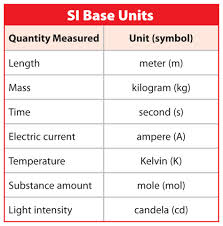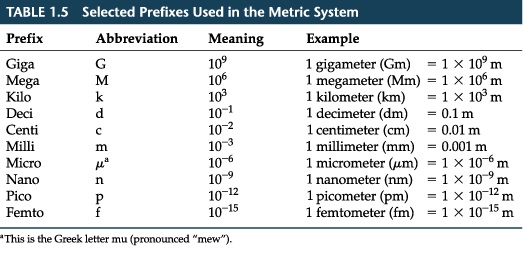SI Units
This page is about SI Units. This page is in progress by Jinyoung Lee.
The Main Idea
SI unit stands for the 'International System of Units'. It is the modern form of the metric system, and is the most widely used system of measurement. It is made up of 7 standard units. It justify twenty-two named units, and includes many more unnamed coherent derived units. The system also establishes a set of twenty prefixes to the unit names and unit symbols that may be used when specifying multiples and fractions of the units.
A Mathematical Model
There are some mathematical operation required to translate a non-SI unit to SI unit. For example [math]\displaystyle{ {\frac{lb}{2.2}} = kg }[/math] Since 1 kg(SI unit) is equal to 2.2 lb, to change lb to SI unit, lb has to be divided by 2.2.
Another example can be length. [math]\displaystyle{ {\frac{inch}{0.394}} = cm }[/math] Same method used to change lb to kg. Since 1cm is equal to 0.394inch, inch has to be divided by 0.394 to become SI unit, cm.
Base SI units
This image above shows the base SI units. These units include length, mass, time, electric current, temperature, substance amount, and light intensity.
Prefix
Mass, length or any numbers in physics can be very small or very large. Electron can be a great example. Mass of electron is 0.0000000000000000000000910938356g or 9.10938356 E-31. In SI, prefixes are available to adjust the size of a unit so as to keep the number of those units reasonable. It is kind of difficult to read that number in word. However with the prefix it can be. Image below shows the list of prefixes.
Connectedness
This topic can be applied to every aspect of science. When solving the problem, or even when doing a research, every equations and theories are based on SI units. It is a promises between scientists to use the certain unit to reduce the errors or misunderstanding. Therefore, it is very important to know the concept of SI units. This topic is connected to not only physics but also every other scientific subjects. In addition, it might not be familiar in United States, but in the most of the countries they use SI units in ordinary life.
- How is this topic connected to something that you are interested in?
- How is it connected to your major?
- Is there an interesting industrial application?
History
Put this idea in historical context. Give the reader the Who, What, When, Where, and Why.
See also
Are there related topics or categories in this wiki resource for the curious reader to explore? How does this topic fit into that context?
Further reading
Books, Articles or other print media on this topic
External links
Internet resources on this topic
References
This section contains the the references you used while writing this page

